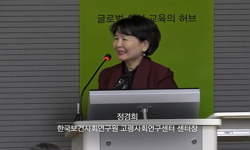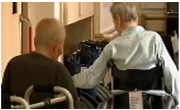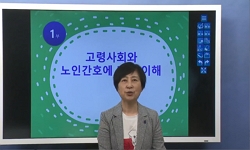Amid the aging trend, countries are seeing increasing social costs for the elderly and older people becoming increasingly vulnerable to medical care. Conscious of this problem, we explored the legal and institutional features of German telemedicine sy...
http://chineseinput.net/에서 pinyin(병음)방식으로 중국어를 변환할 수 있습니다.
변환된 중국어를 복사하여 사용하시면 됩니다.
- 中文 을 입력하시려면 zhongwen을 입력하시고 space를누르시면됩니다.
- 北京 을 입력하시려면 beijing을 입력하시고 space를 누르시면 됩니다.

독일의 원격의료의 법제와 제도에 관한 연구 = A Study on the Law and System of Telemedicine in Germany for the Elderly
한글로보기https://www.riss.kr/link?id=A105967793
- 저자
- 발행기관
- 학술지명
- 권호사항
-
발행연도
2018
-
작성언어
Korean
-
주제어
Aging ; Medical vulnerable people for elderly ; Telemedicine ; Modernization ; Smart Health Law ; 고령화 ; 노인 의료취약계층 ; 원격의료 ; 현대화법 ; 스마트법
-
등재정보
KCI등재
-
자료형태
학술저널
-
수록면
273-310(38쪽)
-
KCI 피인용횟수
0
- 제공처
-
0
상세조회 -
0
다운로드
부가정보
다국어 초록 (Multilingual Abstract)
Amid the aging trend, countries are seeing increasing social costs for the elderly and older people becoming increasingly vulnerable to medical care. Conscious of this problem, we explored the legal and institutional features of German telemedicine systems, which are already considered advanced models as a technical means of reducing social costs and delivering effective medical services in the future. Germany has tried to digitize medical services since the 1990s to prevent the financial crisis of medical care caused by aging and to provide high quality medical services to the medical-medication areas, and is emerging as a national competitive industry today. Germany is strengthening remote medical care through the fourth industrial-based smart-halt industry. In particular, from the 2000s, the legal basis for institutionalizing telemedicine was created. Germany's social laws are federal and smart. In Volume 5 of the Social Act, there is a statutory requirement concerning social insurance. Policies and enforcement systems for smart helicopters underlying telemedicine are based on the GKV-Modernisierungsgeset of 2003 Social Insurance Act. The Das E-Health-Gesetz, established in 2015, provided the infrastructure for telemedicine. In fact, according to Article 7 of the German Academy of Sciences, doctors are allowed to meet and treat patients directly in medical practice, but are allowed to provide patients with general information about diseases at long distances. In 2010, the national strategy presented a multilateral strategy to universalize and develop the telemedicine system. The most important result is the National Medical Portal, which can plan standards and interoperability for future projects.
국문 초록 (Abstract)
세계적으로 고령화가 진행되는 추세 속에 노인들은 점점 더 의료 취약계층으로 전락하고 있다. 이러한 문제 의식하에 미래에 사회적 비용을 절감하고 효율적인 의료 서비스 전달을 위한 기...
세계적으로 고령화가 진행되는 추세 속에 노인들은 점점 더 의료 취약계층으로 전락하고 있다. 이러한 문제 의식하에 미래에 사회적 비용을 절감하고 효율적인 의료 서비스 전달을 위한 기술적인 방안으로 이미 선진적 모델로 평가받고 있는 독일의 원격의료 시스템의 법적 제도적 특징을 탐색하였다. 독일은 고령화로 인한 의료의 재정난을 막고 의료취약지역에 질 높은 의료서비스를 공급하기 위해서 1990년대부터 의료의 디지털화를 시도하였으며 오늘날 국가 경쟁력있는 산업으로 부상하고 있다. 독일은 4차 산업기반의 스마트 핼쓰 산업을 통해 원격의료를 더욱 견고하게 하고 있다. 특히 2000년대부터 원격의료를 제도화하기 위한 법적 기반을 만들기 시작하였다. 바로 연방법의 성격을 가진 사회 법과 스마트 핼쓰법이다. 사회법 제 5권에서 사회보험과 관련된 법적 규정이 있다. 원격의료의 기반이 되는 스마트 핼쓰에 대한 정책과 집행제도는 2003년 사회보험법령의 현대화법(GKV-Modernisierungsgesetz)에 근거하고 있다. 2015년에 제정된 스마트핼쓰법(Das E-Health-Gesetz)을 통해 원격의료의 인프라 구조를 마련하였다. 사실 독일의사전문가 강령 제 7의 4에 따르면, 의사가 의료행위를 하는데 있어서 직접 환자를 만나 치료할 수 있도록 규정하고 있지만 원거리에서 질병에 대한 일반적인 정보를 환자에게 제공하는 것은 허용하고 있다. 2010년 국가 전략에서 원격의료 제도를 보편화하고 발전시키기 위한 다각적인 전략을 제시하였다. 가장 중요한 결과는 “국가 의료 포털”로 미래의 프로젝트를 위한 기준과 상호운영가능성을 기획을 할 수 있게 되었다.
참고문헌 (Reference)
1 이찬우, "중국 원격의료 도입과 정책 시사점" KERI 2016
2 김대중, "유럽 주요국의 원격의료 사업 모델과 시사점, 보건복지국제동향" 2017
3 김진숙, "원격의료현황에 관한 연구" 2015
4 윤석찬, "원격의료의 법리와 실현" 한국재산법학회 32 (32): 275-293, 2015
5 조경애, "원격의료 확대, 무엇이 문제인가?" 2012
6 김진숙, "원격의료 정책 현황 분석 연구" 의료정책연구원 2015
7 김필두, "독일의 저출산 고령화시대에 대한 대책과 시사점" 한국지방행정연구원 2015
8 마틴 알브레히트, "독일 주치의 공급의 지역격차" 1 (1): 2017
9 세계보건기구, "건강과 인권에 관한 25가지 질문과 답변"
10 "www.nav-virchowbund.de"
1 이찬우, "중국 원격의료 도입과 정책 시사점" KERI 2016
2 김대중, "유럽 주요국의 원격의료 사업 모델과 시사점, 보건복지국제동향" 2017
3 김진숙, "원격의료현황에 관한 연구" 2015
4 윤석찬, "원격의료의 법리와 실현" 한국재산법학회 32 (32): 275-293, 2015
5 조경애, "원격의료 확대, 무엇이 문제인가?" 2012
6 김진숙, "원격의료 정책 현황 분석 연구" 의료정책연구원 2015
7 김필두, "독일의 저출산 고령화시대에 대한 대책과 시사점" 한국지방행정연구원 2015
8 마틴 알브레히트, "독일 주치의 공급의 지역격차" 1 (1): 2017
9 세계보건기구, "건강과 인권에 관한 25가지 질문과 답변"
10 "www.nav-virchowbund.de"
11 "https://www.who.int"
12 "https://www.gtai.de"
13 "https://www.dgtelemed.de/"
14 "https://united-kingdom.taylorwessing.com"
15 "https://news.kotra.or.kr"
16 "https://ko.wikipedia.org/"
17 "https://eible.blog/"
18 "http://www.healthcareshapers.com"
19 "http://www.etc-graz.at/"
20 Hope, "Report of the Ageing Societies Working Group 2012" 2012
21 Sunyaev, "Health-Care Telematics in Germany" Gabler 2011
22 Stroetmann, Arrtman, and Giest, "Country Brief Germany, European Commission, DG Information Society and Media" ICT for Health Unit
23 최현수, "4차 산업혁명에 대비한 보건복지 분야 데이터주도 정책 추진 필요성과 방향" 15-24, 2017
24 International Trade Administration, "2016 Top Markets Report Health IT Country Case Study-Germany" 2016
동일학술지(권/호) 다른 논문
-
- 한국사회법학회
- 조흠학
- 2018
- KCI등재
-
- 한국사회법학회
- 정진우
- 2018
- KCI등재
-
- 한국사회법학회
- 박수경
- 2018
- KCI등재
-
- 한국사회법학회
- 김유나
- 2018
- KCI등재
분석정보
인용정보 인용지수 설명보기
학술지 이력
| 연월일 | 이력구분 | 이력상세 | 등재구분 |
|---|---|---|---|
| 2027 | 평가예정 | 재인증평가 신청대상 (재인증) | |
| 2021-01-01 | 평가 | 등재학술지 유지 (재인증) |  |
| 2018-01-01 | 평가 | 등재학술지 선정 (계속평가) |  |
| 2016-01-01 | 평가 | 등재후보학술지 선정 (신규평가) |  |
학술지 인용정보
| 기준연도 | WOS-KCI 통합IF(2년) | KCIF(2년) | KCIF(3년) |
|---|---|---|---|
| 2016 | 0.17 | 0.17 | 0.19 |
| KCIF(4년) | KCIF(5년) | 중심성지수(3년) | 즉시성지수 |
| 0.19 | 0.17 | 0.48 | 0 |




 KCI
KCI eArticle
eArticle






